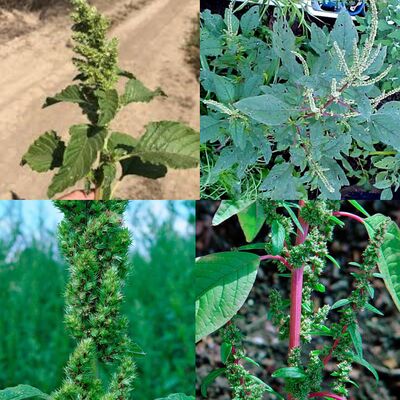Pigweed, often considered a nuisance in gardens, is actually a remarkable plant with incredible nutritional and health benefits. Don’t be fooled by its reputation as a common weed – pigweed has a rich history of use in various cultures around the world. In this article, we will explore the top ten health benefits of pigweed, how to include it in your meals, and essential precautions you should take.
Top 10 Health Benefits of Pigweed
1. Bone Health: Pigweed is rich in calcium, which helps maintain strong bones and prevent osteoporosis.
2. Heart Health: The fiber, antioxidants, and potassium found in pigweed contribute to cardiovascular health by lowering blood pressure, reducing cholesterol levels, and supporting heart function.
3. Anemia Prevention: With its high iron content, pigweed helps prevent iron-deficiency anemia and boosts overall energy levels.
4. Immune Support: Pigweed contains vitamin C, which plays a key role in boosting the immune system and helping the body fight off infections and illnesses.
5. Eye Health: Pigweed is a great source of vitamin A and beta-carotene, which are crucial for maintaining healthy vision and preventing eye conditions such as night blindness.
6. Protein Source: Pigweed seeds are a valuable source of protein, making it an excellent addition to vegetarian and vegan diets.
7 Digestive Health: High in dietary fiber, pigweed aids in digestion, maintains a healthy gut, prevents constipation, and helps regulate blood sugar levels.
8. Anti-inflammatory Effects: Pigweed possesses anti-inflammatory properties that can help reduce inflammation in the body, benefiting conditions such as arthritis and other inflammatory diseases.
9. Antioxidant Properties: Pigweed is rich in antioxidants, which protect the body against oxidative stress and reduce the risk of chronic diseases such as heart disease and cancer.
10. High in Nutrients: Pigweed leaves are packed with essential vitamins and minerals like A, C, and K, calcium, iron, magnesium, and potassium, supporting overall health and wellbeing.
How to Include Pigweed in Your Diet
Pigweed can be used in various culinary applications, making it a versatile addition to your kitchen. Here are some simple ways to incorporate pigweed into your meals:
- Salads: Add young pigweed leaves to your salads for a nutritious and flavorful green.
- Sautéed or Steamed: Cook pigweed leaves like spinach by sautéing or steaming them with garlic, olive oil, and a pinch of salt.
- Soups and Stews: Enhance the nutrition and flavor of soups and stews by adding pigweed.
- Smoothies: Boost the nutrient content of your smoothies by blending in pigweed leaves.
- Grains: Cook pigweed seeds like quinoa or use them in baking by grinding them into flour.
Important Precautions
While pigweed offers numerous health benefits, it is important to consume it in moderation. Some species of pigweed contain oxalic acid, which can interfere with calcium absorption and may contribute to kidney stone formation in susceptible individuals. Always ensure that the pigweed you consume is properly identified and free from contaminants such as pesticides and pollutants.
Pigweed is more than just an invasive weed; it is a nutritional powerhouse that can enhance your diet and improve your health. With its wide array of vitamins, minerals, antioxidants, and protein, pigweed offers numerous health benefits from supporting bone health to boosting the immune system. By incorporating pigweed into your meals, you can take advantage of its many benefits and enjoy a healthier, more nutritious diet. Remember to consume pigweed in moderation and ensure it is free from harmful substances. Embrace this hidden gem and unlock the potential of pigweed in your culinary adventures.
